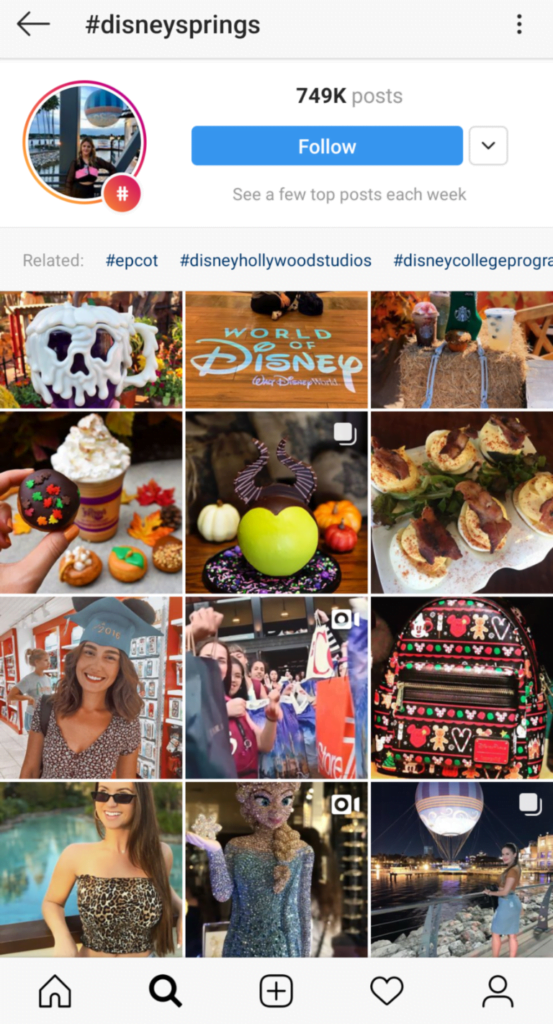While marketing to Gen Z can seem daunting for some brands, it’s actually easier than you think. This demographic, also known as “digital natives,” has unique characteristics that set them apart from previous generations.
Gen Zers are progressive, highly diverse, and are expected to be the most educated generation yet.
They value inclusivity, avoid labels, and carefully evaluate their options before making a purchase. Understanding these traits is essential for marketers looking to tap into Gen Z’s significant spending power and stay up-to-date on social media trends, ultimately driving new business for their brands.
10 social strategies for marketing to Gen Z
Marketing to younger customers has always been challenging due to difficult-to-track demographic data and ever-changing marketing trends.
However, Gen Z’s outspoken and digitally-connected nature makes understanding their buying behavior easier.
To avoid appearing out of touch, it’s essential for brands to recognize that Gen Z is not a homogenous group and to bridge the gap between them and other generations, including Millennials.
Understanding their distinct online behaviors and social preferences is the key to connecting with members of Gen Z. Let’s explore 10 effective social strategies for marketing to this generation.
1. Use visual content
To reach Gen Z on social media, it’s crucial to focus on eye-catching, visual content. According to surveys, 81% of Gen Z prefer Instagram and YouTube as their top social networks.
Instagram is particularly popular, with 56% of Gen Z wanting to see more brand content on this platform.

Bite-sized content, such as Instagram Stories and short-form videos with overlays, visual effects, and music, have proven to be effective in capturing Gen Z’s attention.
Brands should also consider incorporating TikTok, which has over 680 million users worldwide and is especially popular among 10-19-year-olds in the US. In short, marketers who want to connect with Gen Z should prioritize visual platforms and short-form videos.

To grab the attention of younger customers, brands must prioritize video and stylized visual content. With the emergence of new apps, social features, and creative filters, anything that’s considered static or “boring” won’t resonate with Gen Z. Therefore, marketers must focus on creating visually engaging content that appeals to the dynamic and creative nature of Gen Z.
2. Try out interactive content to engage Gen Z
To grab the attention of Gen Z on social media, it’s important to incorporate interactive and creative elements into your content.
Younger customers crave engagement and want to actively participate by tapping, swiping, or clicking on posts. Incorporating interactive features such as polls, quizzes, and stickers can not only help you learn about your customers but also increase engagement and encourage conversation.
Twitter polls are a quick and easy way to inspire engagement among your followers, while Instagram features like polls, stickers, and sliders can add an extra layer of interactivity to your posts.

Interactive content can also help drive purchasing decisions. Brands like Topshop, which cater to a significant Gen Z and Millennial customer base, feature quizzes on their websites to help shoppers identify styles that fit their personalities. By personalizing the shopping experience, these brands show that they value their customers as individuals and earn their loyalty.
3. Utilize time-sensitive posts to trigger their FOMO
To effectively market to Gen Z, it’s important to consider how you can use their fear of missing out (FOMO) to your advantage.
Platforms like Instagram provide opportunities for brands to create time-sensitive content that is engaging and persistent in their followers’ feeds through notifications. Instagram Drops, a new feature, is an example of how brands can create hype for limited-time releases.
4. Harness the power of tags for engagement
Incorporating tags is a crucial tactic when it comes to marketing to Gen Z. Here are a few examples:
- Encourage followers to share user-generated content, such as customer photos, using a branded hashtag.
- Allow customers to tag themselves at a brand’s physical location.
- Request that customers tag their friends and family to attract potential followers to the brand’s social media account.
Uniqlo, for instance, has a dedicated Instagram Stories highlight that showcases customers who use the hashtags #Uniqlo or #LifeWear.

Tags promote interactivity, which is highly valued by Gen Z. Brands with a physical location can benefit from Gen Z’s desire to showcase themselves “in the wild.” It’s important to have a hashtag that followers can promote, as well as something on-site that is worth photographing. For instance, Disney Springs has a steady stream of customer photos to share with their followers thanks to their numerous hashtags.

Even a simple request for a tag is sufficient to encourage a meaningful response from younger consumers. As part of its promotion strategy, the North Coast Festival in Chicago shared a “tag-a-friend” post, offering followers a chance to win a three-day general pass.

5. Display your brand’s sense of humor
Appealing to younger customers requires having a brand personality that is both fun and cool. This is why humorous and meme-based content is so popular among Gen Z.
However, the challenge for brands is to keep up with the fast-paced nature of the internet. Using outdated memes or attempting to be funny in industries where humor doesn’t fit may make a brand appear out of touch.

What is crucial for brands is to have a unique voice that showcases the human side of their social presence. They should aim for authentic interactions that don’t feel scripted or too formal. Brands that can be unpredictable and organic in their customer interactions are more likely to capture the attention of younger audiences.
6. Being responsive to Gen Z followers
In fact, timely responses are an essential component of any brand’s social strategy as 47% of consumers consider a best-in-class brand to be one that offers excellent customer service.
Responsiveness not only fosters customer loyalty but also supports financial goals. According to Sprout research, 41% of Gen Z consumers are more likely to buy from a brand that provides responsive customer service than from a competitor. Brands can utilize social listening tools to ensure they don’t miss any keyword mentions or meaningful customer interactions online.
7. Amplify Your Brand’s Beliefs and Values
According to the Brands Get Real report, consumers expect brands to take a stand on social issues. This is especially true for Gen Z consumers who believe that a brand’s purpose is to serve society and its communities. From promoting diversity to raising awareness of social issues, brands are increasingly showcasing their beliefs and values on social media.

Boldly taking a stance is no longer the exception, but rather the norm for brands. This aligns with Gen Z’s desire to be heard and express their own beliefs. However, it’s crucial for brands to be mindful of how they present their values and beliefs on social media and to do so in an appropriate and respectful manner.
8. Leverage users’ feedback
It’s not always necessary for a brand to constantly promote itself to encourage purchasing behaviors. According to Sprout’s Digital Natives Report, 82% of Gen Z shoppers are more likely to buy from a brand after reading reviews from other customers on social media.
Integrating customer feedback and testimonials into your social media strategy can boost your brand’s online reputation and credibility through social proof, while also educating potential customers. Five Guys, for instance, shares user-generated content and reviews from happy customers on their social media pages.
To encourage customer reviews, you can reach out to satisfied customers or create feedback templates to send after a purchase or experience. Make it easy for customers to leave feedback and respond to reviews, whether they are positive or negative. You can also utilize a review management tool like Sprout to manage and monitor reviews across multiple platforms.
9. Meeting Your Audience on Their Preferred Platforms
According to the Sprout Social Index, Edition XVII: Accelerate, 78% of Gen Z consumers have increased their social media usage. Brands can leverage social commerce strategies to reach these consumers where they are and tap into impulse buying behaviors. For instance, Patagonia’s Product Pin boards serve as a tool for product navigation and allow customers to click through and purchase items. Another effective strategy is livestream shopping, which involves buying and selling products during a live broadcast. While this ecommerce method is relatively new in the U.S., brands on platforms like Facebook, Instagram or TikTok can explore how they can leverage their livestreams to drive business goals.
10. Delivering What Consumers Truly Desire: A Guide for Brands
Understanding Customer Wants and Needs: The Key to Winning Gen Z Consumers
In the current landscape, brands that demonstrate an acute understanding of their customers’ preferences and desires are more likely to win over Gen Z shoppers. According to the Sprout Social Index, half of Gen Z consumers are more inclined to purchase from a brand that effectively communicates this understanding, giving businesses an edge over their competitors.
Brands can communicate their attentiveness to customer needs in various ways, such as responding to feedback, releasing new products based on consumer input, or providing personalized experiences. By leveraging social listening tools, marketers can identify the trends and topics that interest Gen Z consumers and develop content that resonates with them, strengthening brand-customer relationships in the process.
Summary:
Marketing to gen z may require some finesse, but it’s not limited to only trendy brands on social media.
Who wouldn’t want more visual content, authenticity, and interactive conversations with customers?
By taking the initiative to understand Gen Z’s preferences and what sets them apart from other age groups, brands have the potential to cultivate meaningful relationships that benefit everyone involved.
Ready to elevate your marketing to gen z game? Download the Digital Natives Report now to discover more about the needs, interests, and values of this social media-savvy demographic.